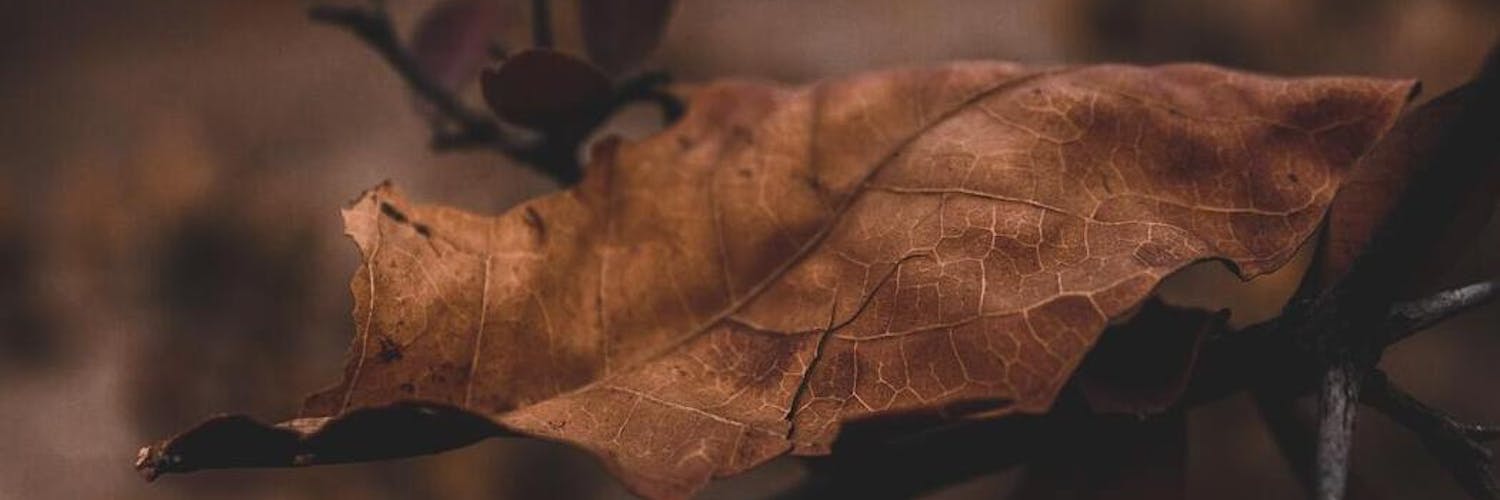Why are the leaves on my plant brown?
If you see that the leaves of your plants are brown, dry and brittle, this can happen for several reasons. We will show you how to diagnose it and how to fix it.

Having plants is wonderful, very relaxing and does wonders for mental and emotional well-being... until you detect the first problem and don't know what may be causing it. It's those moments when we want plants to have a voice and be able to tell us what's bothering them or what's missing. But don't despair, plants have their way of expressing themselves and that is through the leaves. If you see that the leaves of your plants are brown, dry, and brittle, this can happen for several reasons. We will teach you how to make the diagnosis and how to fix it.
What causes brown leaves?
Water flows throughout the plant through the stems, from the roots to the tip of the last leaf. When the plant's water supply is suspended for some reason, there is not enough to reach the tips of the leaves. For this reason, the tips of the leaves are often the first to be affected by this problem. Not having enough water to keep the leaf tissues hydrated and flexible, the cells dry out and die.
There are different situations that can prevent water from flowing properly, with the efficiency that the plant needs to remain healthy and radiant. From problems with roots, over- or under-watering, too much sun exposure, excess fertilizer, among others. You should also know that all plants have a life cycle, in which the older leaves die and make room for younger ones.
Types of brown leaf spots
Brown, dry- tips:
The tips of your plant's leaves look dry, tan, and crumble if you touch them. This occurs when there are problems with watering or fertilizer.
Brown leaf spots are dry, brown- spots
that appear randomly on the surface of the leaf, sometimes forming circles or shapes and spreading until completely dry. This problem has to do with fungal or parasite problems, which you need to identify and treat.
- The
leaves of the plant begin to discolor a little, turn yellow, and then dry out and fall off. It usually occurs on the leaves at the bottom. You don't have to worry about this, as it's part of the plant's life cycle. The leaves age and drop naturally.
- While
it's not possible to turn a brown leaf green again, you need to correct the situation that's affecting the plant to prevent the rest of the leaves from being affected. To do this, you need to identify the problem by taking a good look at your plant.
- If
you notice that the brown tips of the leaves are concentrated in one section or that it affects only the youngest leaves, it may be due to direct sun exposure. Move it to a space where the sun's rays won't reach it for as long.
- Depending
on the species of your plant, the substrate should feel cool and somewhat moist, but never too compact or waterlogged. If it's too wet, it feels almost like mud, the roots will start to rot, you won't be able to develop new roots, and the water won't circulate well. If, on the other hand, it is so dry that it has compacted around the root, the air does not circulate and the water will run off the sides, without reaching the roots.
In both cases, you should gently remove the plant from its pot. If the problem is too much water, check drainage holes in the pot and place a layer of gravel at the bottom. Wrap the root ball of soil in paper towels and change it a couple of times when it gets wet. Release some substrate with your hands and mix with dry substrate before replanting.
In case there are problems due to lack of watering, you can move the substrate a little to aerate the roots, plant and do an immersion irrigation, that is, place it inside a bucket of water to absorb it underneath. Let drain well.
- Excess
The solution is very simple: water abundantly to wash away the excess minerals from the fertilizer. Let the plant drain very well and be careful not to flood it.

